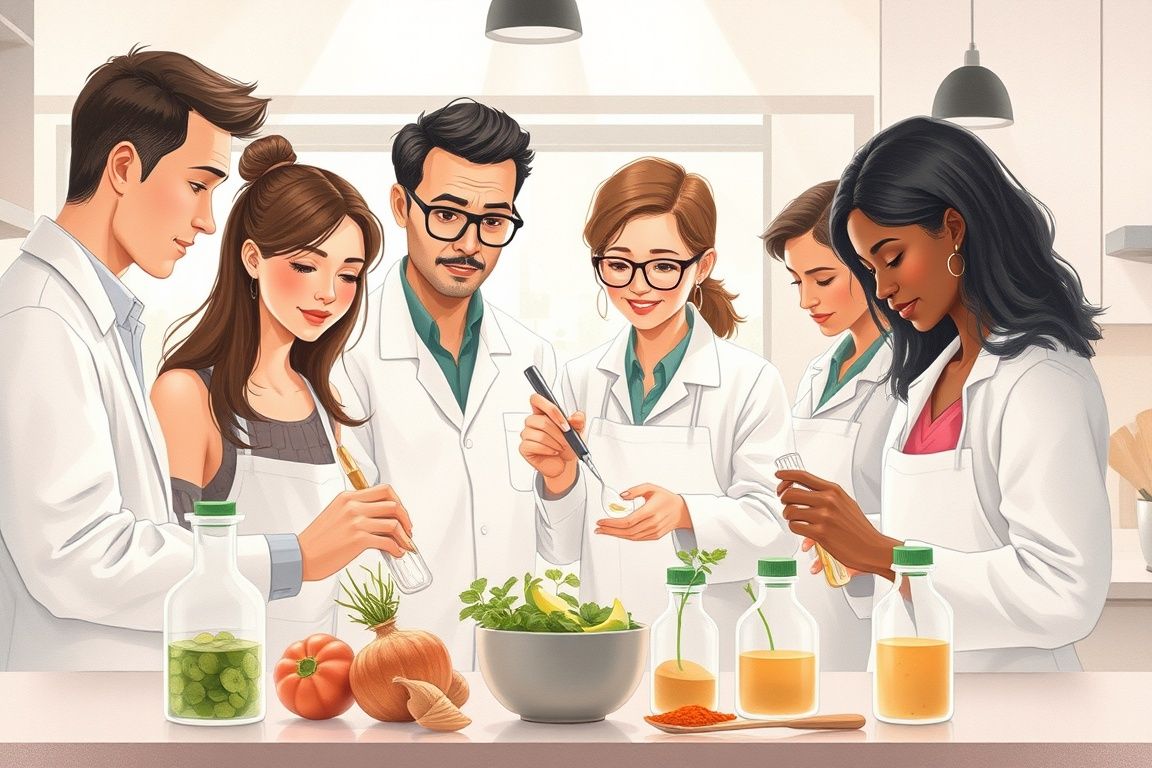Why It’s Worth It
Gain a deep understanding of cooking processes at a molecular level for enhanced flavor and texture in your dishes.
Learn to troubleshoot and refine your cooking methods to overcome common challenges in the kitchen efficiently.
Explore modernist techniques and their scientific foundation to innovate and impress in your culinary endeavors.
Your Learning Roadmap
Foundations of Culinary Science
In this module, learners will explore the key scientific principles underlying cooking processes. The module covers essential concepts such as molecular gastronomy, food components, and heat transfer. Students will understand how these scientific insights influence everyday cooking practices and flavor development. This foundational knowledge sets the stage for more advanced culinary science topics. Introduction to Molecular Gastronomy Understanding Food Components Fundamentals of Heat Transfer
Maillard Reaction and Browning
This module delves into the Maillard reaction, a foundational process behind the browning of food. Learners will explore how amino acids and sugars interact under heat to produce distinctive flavors and colors. The scientific principles driving this reaction will be examined through both theory and practical examples. Students will gain insight into adjusting culinary techniques to harness the full potential of the Maillard reaction. Introduction to Maillard Reaction Chemical Processes in Browning Impact on Flavor and Aroma
Sugar Chemistry: Caramelization
In this module, learners will delve into caramelization, the process whereby sugar undergoes transformation when heated. The session explains the chemical changes taking place and how they differ from the Maillard reaction. Through detailed discussion, students discover how heat intensifies flavor, color, and texture in sweet dishes. The module also links carbohydrate chemistry to practical cooking techniques. Basics of Caramelization Sugar and Heat Interactions Texture and Flavor Dynamics
Emulsification and Emulsion Stability
This module focuses on the science behind creating and stabilizing emulsions in cooking. Students will learn how two liquids that usually do not mix can be combined using emulsifiers. The lessons cover both theoretical and practical aspects of emulsion formation. Learners will gain skills to apply these principles in sauces, dressings, and other culinary preparations. Principles of Emulsification Stabilizers and Techniques Practical Emulsion Examples
Modernist Cooking Techniques
This module explores modernist cooking techniques that integrate science into flavor and presentation. Students will discover techniques such as spherification, sous vide, and molecular foaming. The lessons bridge theoretical knowledge with current trends in gastronomy. Learners will be equipped to experiment with unconventional methods to elevate their culinary creations. Spherification and Gelation Sous Vide and Vacuum Cooking Molecular Foam and Air
Integrating Culinary Science
In this final module, learners will integrate their understanding of cooking science with hands-on culinary applications. The module emphasizes recipe development that leverages chemical reactions and modern techniques. Students will learn strategies for troubleshooting common cooking challenges. Future trends and innovative methods in the culinary world are also explored to inspire continual learning. Recipe Development Using Science Troubleshooting Cooking Reactions Future Trends in Culinary Science
What Users Are Saying
All You Need to Know
Join Now!
Real-time interaction with AI for instant feedback
Practical applications and examples throughout the course
Flexible learning at your own pace and schedule
Foundation in culinary science for better recipe development
Hands-on lessons that integrate modern cooking techniques
Continuous updates on future trends in culinary science

